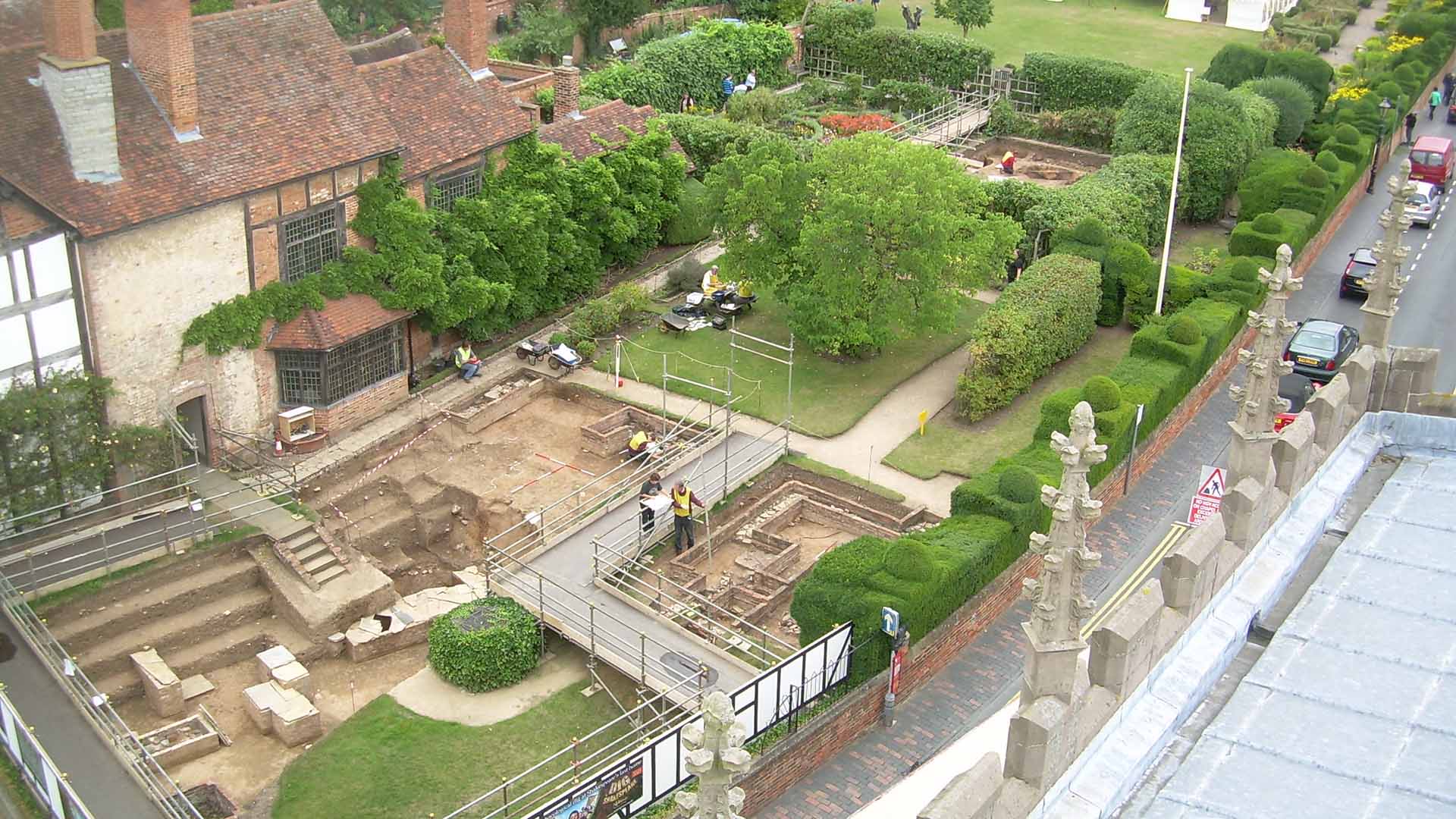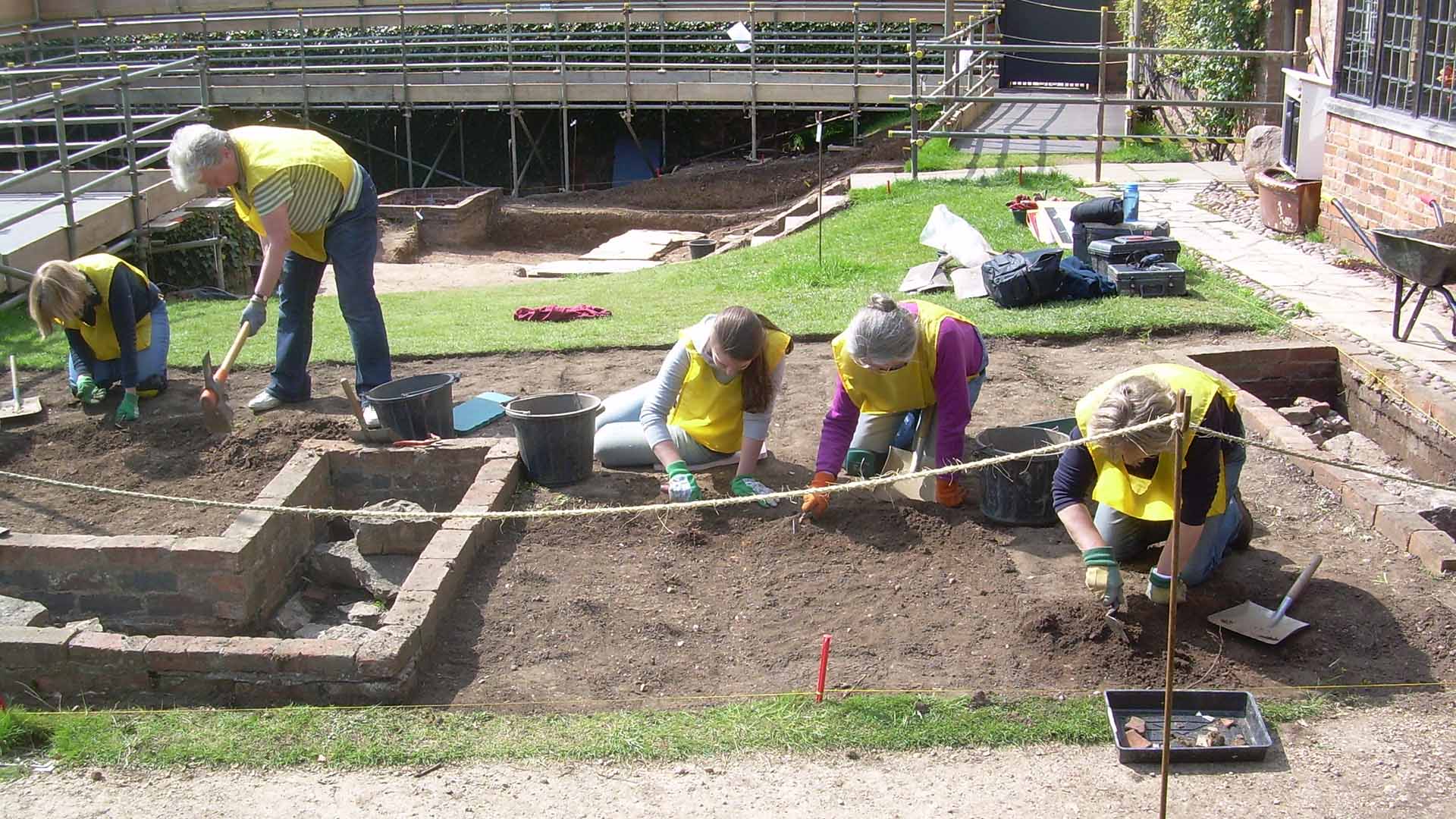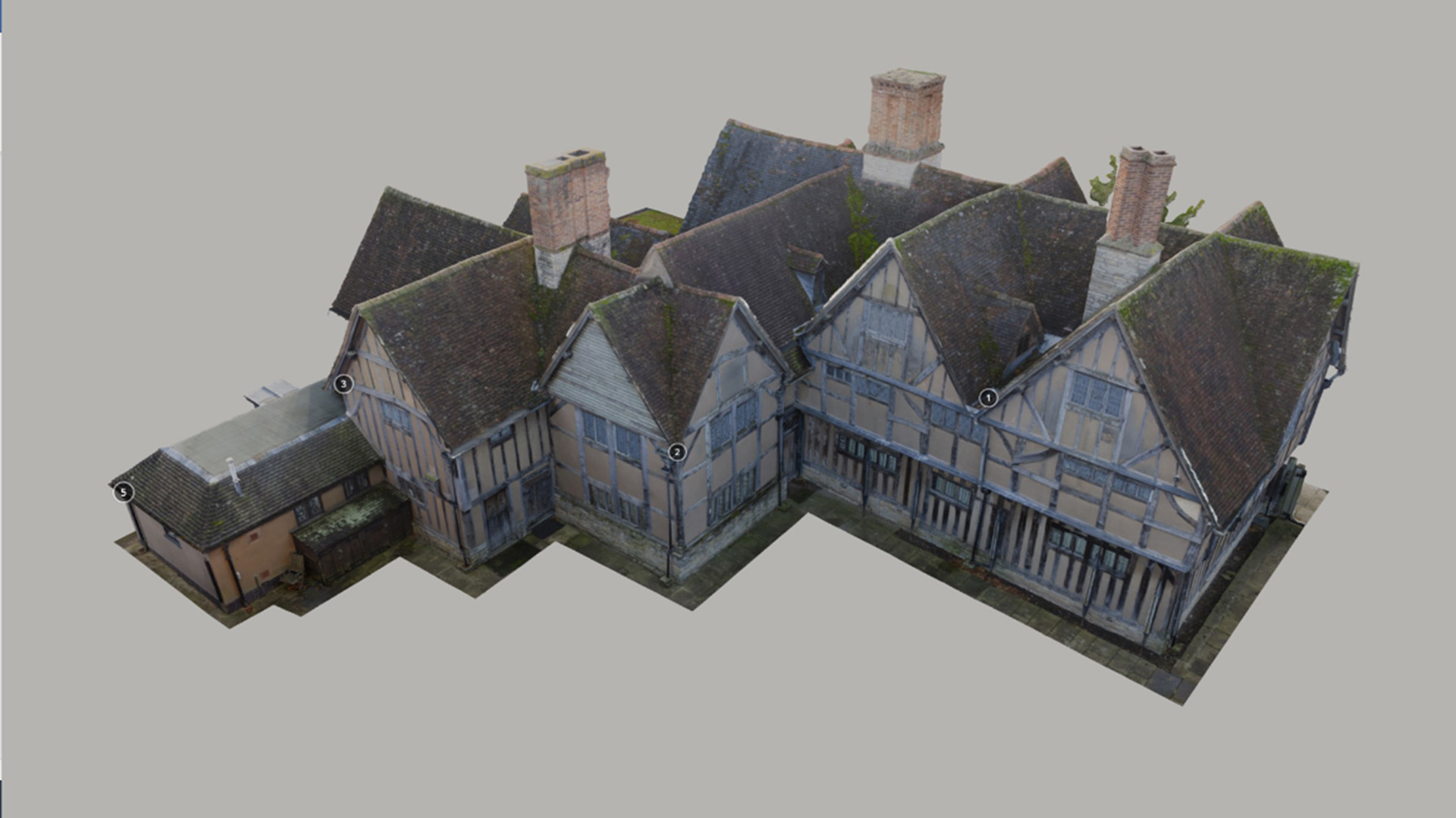
Searching for Shakespeare
Archaeological investigations into the life and times of William Shakespeare and his family.
Ongoing funding by the Shakespeare Birthplace Trust, the Heritage Lottery Fund and independent donors.
Project Summary
Since 2013, researchers from the Centre of Archaeology have been at the forefront of research into the archaeology of Shakespeare through the ‘Searching for Shakespeare’ project. The key research aim of the project is to use cutting-edge archaeological and forensic methodologies to increase our understanding of Shakespeare and his immediate family’s domestic life; social status and his death and burial.
The Centre of Archaeology investigated New Place, Shakespeare’s long-since demolished family home, through a large-scale community excavation project. The building was demolished in the 18th century, however the site and its remains were preserved beneath a garden. Over a 5 year period, the site was excavated with the objective of finding out as much as possible about the New Place that Shakespeare would have known. Comprehensive archival research, architectural analysis and interpretation of the archaeological results have enabled the team to present an accurate reconstruction of the New Place property as it would have looked in Shakespeare’s’ day.
Archaeological evidence recovered from non-invasive investigations at Shakespeare’s burial place has also been used to provide further evidence of his personal and family beliefs. Ground Penetrating Radar (GPR) was used to investigate the Shakespeare family graves below the chancel of Holy Trinity Church.

The results presented evidence of simple burials with no elite trappings or finery and no large family crypt, confirming a simple regional practice based on pious religious observance and an affinity with his hometown.
Other properties associated with the Shakespeare family continue to be archaeologically investigated. These properties, including Anne Hathaway’s Cottage, Mary Ardens Farm, Shakespeare’s Birthplace and Hall’s Croft have been the subject of debate, controversy, and mystery for centuries. These locations had not been adequately investigated or presented using modern archaeological techniques, until the recent research projects.
Members of the Centre of Archaeology at the University of Huddersfield are currently supporting the conservation and archaeological investigations of Hall’s Croft, a Grade I listed building which dates back to 1613 and was the home of Shakespeare’s daughter Susanna and her physician husband, John Hall.
A digital model of the of the building has recently been produced which will be used to inform more targeted repairs, as well providing a permanent record of the state of the building as it stands today.
Significant conservation work needs to be undertaken to ensure its future survival. This has the potential to reveal important details about the past construction and development of the building.
Future work includes the supervision of conservation works of one of the last complete examples of Jacobean architecture and one of the small number of surviving buildings which researchers are certain William Shakespeare would have walked.

For further information and media content, please visit the following links:
- Taking the Time to Conserve the Past – SBT Share Updates on the Conversation Works at Hall’s Croft
- (23) 3D models by Centre-of-Archaeology - Sketchfab
- William Shakespeare: archaeology is revealing new clues about the Bard’s life (and death)
- Home - Searching for Shakespeare
- Shakespeare Connected - Shakespeare's New Place: Artefacts and Inhabitants
- Uncovering Shakespeare's House: The Archaeological Dig at New Place | Folger Shakespeare Library